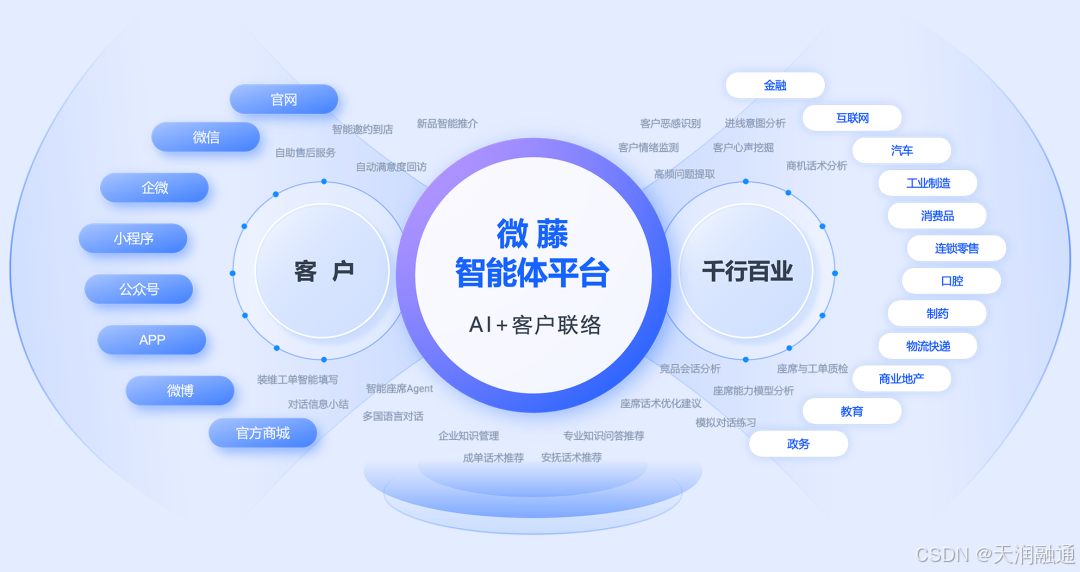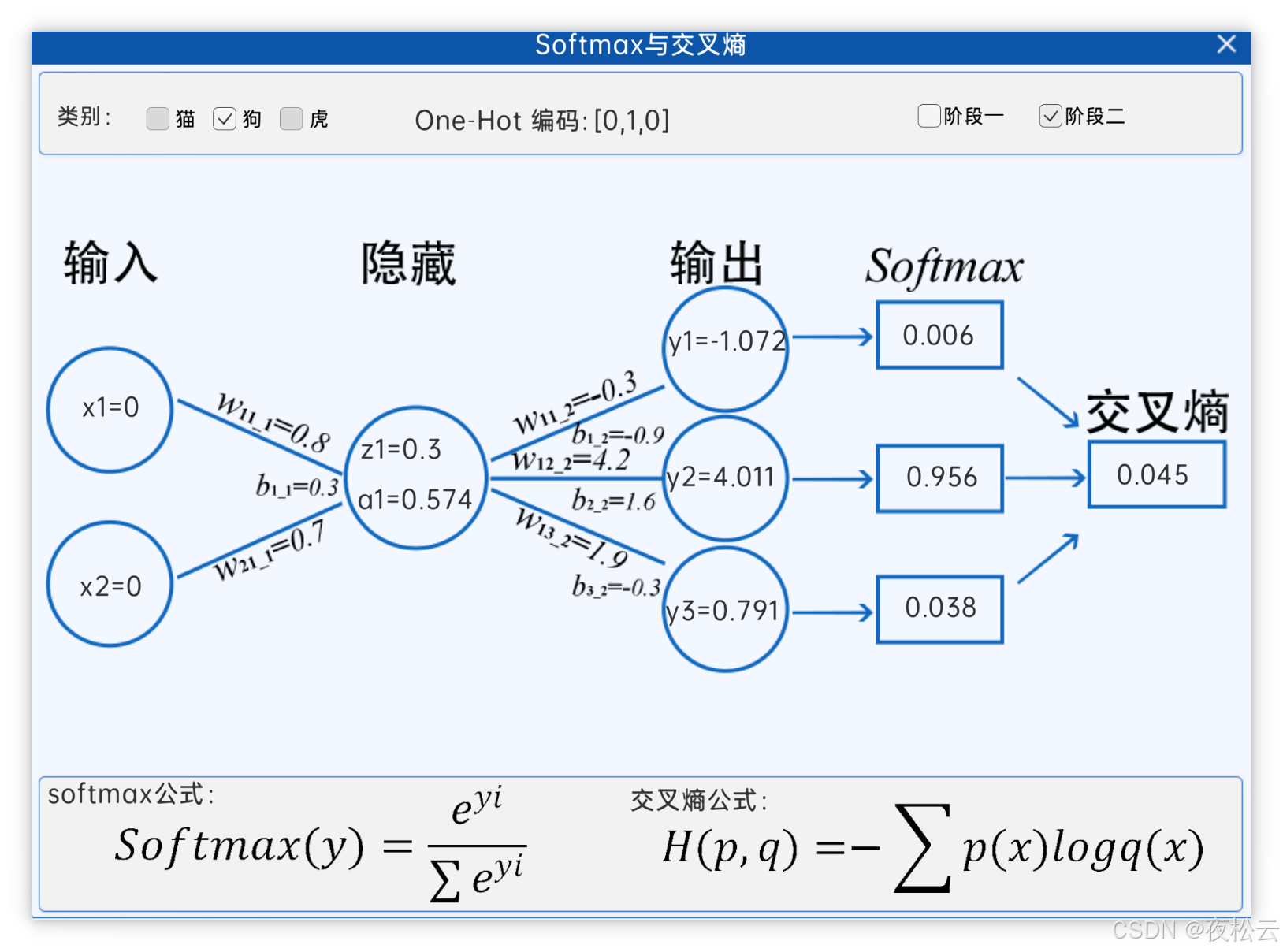Java注解的原理
目录
问题:
作用:
原理:
注解的限制
拓展:
问题:
今天刷面经,发现自己不懂注解的原理,特此记录。
作用:
注解的作用主要是给编译器看的,让它帮忙生成一些代码,或者是帮忙检查、判断和校验数据。
1.给编译器看:
- 帮助编译器进行语法检查(如 @Override、@Deprecated)。
- 通过注解处处理器生成代(如Lombok的@Getter,@Setter)。
2.给运行时框架看
- 通过反射机制动态读取注解信息,实现功能增强(如依赖注入、AOP、配置管理、数据验证)等。
原理:
注解的本质一个特殊的接口,继承了java.lang.annotation.Annotation 接口。当定义一个注解时,Java 编译器会将其转换为一个实现了 Annotation 接口的代理类。
import java.lang.annotation.*;@Retention(RetentionPolicy.RUNTIME)
@Target(ElementType.METHOD)
public @interface MyAnnotation {String value() default "defaultValue";int priority() default 1;
}//伪代码
public interface MyAnnotation extends Annotation {String value(); // 对应注解中的 value 属性int priority(); // 对应注解中的 priority 属性
}//验证
@Retention(RetentionPolicy.RUNTIME) 可以通过反射机制拿去值public static void main(String[] args) throws ClassNotFoundException, InstantiationException, IllegalAccessException, NoSuchFieldException, NoSuchMethodException, InvocationTargetException, UnknownHostException {//获取目标类Class<Student> studentClass = Student.class;//判断类有没有注解if(studentClass.isAnnotationPresent(MyAnnotation.class)){//拿到代理对象MyAnnotation annotation = studentClass.getAnnotation(MyAnnotation.class);System.out.println("value:"+annotation.value());System.out.println("priotity:"+annotation.priority());}}注解的限制
虽然注解看起来像普通的接口,但它们有一些特殊的限制:
- 不能继承其他接口 :注解不能继承其他接口(除了隐式的
Annotation接口)。public @interface MyAnnotation extends SomeOtherInterface {} // 错误!
- 不能包含方法体 :注解中的方法只能声明,不能有实现。
public @interface MyAnnotation { String value() { return "defaultValue"; } // 错误! }
- 不支持泛型 :注解中的方法不能使用泛型。
public @interface MyAnnotation { List<String> values(); // 正确 List<T> values(); // 错误! }

拓展:
java.lang.annotation.Annotation 是所有注解的父接口。它定义了一些通用的方法,用于处理注解的元数据。
package java.lang.annotation;/*** The common interface extended by all annotation interfaces. Note that an* interface that manually extends this one does <i>not</i> define* an annotation interface. Also note that this interface does not itself* define an annotation interface.** More information about annotation interfaces can be found in section* {@jls 9.6} of <cite>The Java Language Specification</cite>.** The {@link java.lang.reflect.AnnotatedElement} interface discusses* compatibility concerns when evolving an annotation interface from being* non-repeatable to being repeatable.** @author Josh Bloch* @since 1.5*/
/*** 所有注解接口继承的公共接口。注意:手动扩展此接口的接口<i>不会</i>成为注解接口。* 此接口自身也不作为注解接口。* * 更多注解接口的详细信息,请参阅《Java语言规范》第{@jls 9.6}节。* * 当注解接口从不可重复变为可重复时,{@link java.lang.reflect.AnnotatedElement}* 接口讨论了相关的兼容性问题。* * 作者:Josh Bloch* 自版本:1.5*/
public interface Annotation {
public interface Annotation {/*** Returns true if the specified object represents an annotation* that is logically equivalent to this one. In other words,* returns true if the specified object is an instance of the same* annotation interface as this instance, all of whose members are equal* to the corresponding member of this annotation, as defined below:* <ul>* <li>Two corresponding primitive typed members whose values are* {@code x} and {@code y} are considered equal if {@code x == y},* unless their type is {@code float} or {@code double}.** <li>Two corresponding {@code float} members whose values* are {@code x} and {@code y} are considered equal if* {@code Float.valueOf(x).equals(Float.valueOf(y))}.* (Unlike the {@code ==} operator, NaN is considered equal* to itself, and {@code 0.0f} unequal to {@code -0.0f}.)** <li>Two corresponding {@code double} members whose values* are {@code x} and {@code y} are considered equal if* {@code Double.valueOf(x).equals(Double.valueOf(y))}.* (Unlike the {@code ==} operator, NaN is considered equal* to itself, and {@code 0.0} unequal to {@code -0.0}.)** <li>Two corresponding {@code String}, {@code Class}, enum, or* annotation typed members whose values are {@code x} and {@code y}* are considered equal if {@code x.equals(y)}. (Note that this* definition is recursive for annotation typed members.)** <li>Two corresponding array typed members {@code x} and {@code y}* are considered equal if {@code Arrays.equals(x, y)}, for the* appropriate overloading of {@link java.util.Arrays#equals Arrays.equals}.* </ul>** @return true if the specified object represents an annotation* that is logically equivalent to this one, otherwise false*/boolean equals(Object obj);/*** Returns the hash code of this annotation.** <p>The hash code of an annotation is the sum of the hash codes* of its members (including those with default values).** The hash code of an annotation member is (127 times the hash code* of the member-name as computed by {@link String#hashCode()}) XOR* the hash code of the member-value.* The hash code of a member-value depends on its type as defined below:* <ul>* <li>The hash code of a primitive value <i>{@code v}</i> is equal to* <code><i>WrapperType</i>.valueOf(<i>v</i>).hashCode()</code>, where* <i>{@code WrapperType}</i> is the wrapper type corresponding* to the primitive type of <i>{@code v}</i> ({@link Byte},* {@link Character}, {@link Double}, {@link Float}, {@link Integer},* {@link Long}, {@link Short}, or {@link Boolean}).** <li>The hash code of a string, enum, class, or annotation member-value* <i>{@code v}</i> is computed as by calling* <code><i>v</i>.hashCode()</code>. (In the case of annotation* member values, this is a recursive definition.)** <li>The hash code of an array member-value is computed by calling* the appropriate overloading of* {@link java.util.Arrays#hashCode(long[]) Arrays.hashCode}* on the value. (There is one overloading for each primitive* type, and one for object reference types.)* </ul>** @return the hash code of this annotation*/int hashCode();/*** Returns a string representation of this annotation. The details* of the representation are implementation-dependent, but the following* may be regarded as typical:* <pre>* @com.example.Name(first="Duke", middle="of", last="Java")* </pre>** @return a string representation of this annotation*/String toString();/*** Returns the annotation interface of this annotation.** @apiNote Implementation-dependent classes are used to provide* the implementations of annotations. Therefore, calling {@link* Object#getClass getClass} on an annotation will return an* implementation-dependent class. In contrast, this method will* reliably return the annotation interface of the annotation.** @return the annotation interface of this annotation* @see Enum#getDeclaringClass*/Class<? extends Annotation> annotationType();
}
相关文章:

Java注解的原理
目录 问题: 作用: 原理: 注解的限制 拓展: 问题: 今天刷面经,发现自己不懂注解的原理,特此记录。 作用: 注解的作用主要是给编译器看的,让它帮忙生成一些代码,或者是帮忙检查…...

AI知识架构之神经网络
神经网络:这是整个内容的主题,是一种模拟人类大脑神经元结构和功能的计算模型,在人工智能领域广泛应用。基本概念:介绍神经网络相关的基础概念,为后续深入理解神经网络做铺垫。定义与起源: 神经网络是模拟人类大脑神经元结构和功能的计算模型,其起源于对生物神经系统的研…...

OpenGL 04--GLSL、数据类型、Uniform、着色器类
一、着色器 在 OpenGL 中,着色器(Shader)是运行在 GPU 上的程序,用于处理图形渲染管线中的不同阶段。 这些小程序为图形渲染管线的某个特定部分而运行。从基本意义上来说,着色器只是一种把输入转化为输出的程序。着色器…...

学习笔记06——JVM调优
JVM 调优实战:性能优化的技巧与实战 在 Java 开发中,JVM(Java Virtual Machine)作为 Java 程序的运行环境,其性能直接影响到应用程序的响应速度和吞吐量。合理的 JVM 调优可以显著提升应用性能,降低延迟&a…...
-TensorFlow入门(常数张量和变量))
深度学习(3)-TensorFlow入门(常数张量和变量)
低阶张量操作是所有现代机器学习的底层架构,可以转化为TensorFlow API。 张量,包括存储神经网络状态的特殊张量(变量)。 张量运算,比如加法、relu、matmul。 反向传播,一种计算数学表达式梯度的方法&…...
学习笔记)
3-2 WPS JS宏 工作簿的打开与保存(模板批量另存为工作)学习笔记
************************************************************************************************************** 点击进入 -我要自学网-国内领先的专业视频教程学习网站 *******************************************************************************************…...

【GO】学习笔记
目录 学习链接 开发环境 开发工具 GVM - GO多版本部署 GOPATH 与 go.mod go常用命令 环境初始化 编译与运行 GDB -- GNU 调试器 基本语法与字符类型 关键字与标识符 格式化占位符 基本语法 初始值&零值&默认值 变量声明与赋值 _ 下划线的用法 字…...

【TypeScript】ts在vue中的使用
目录 一、Vue 3 TypeScript 1. 项目创建与配置 项目创建 关键配置文件 2.完整项目结构示例 3. 组件 Props 类型定义 4. 响应式数据与 Ref 5. Composition 函数复用 二、组件开发 1.组合式API(Composition API) 2.选项式API(Options…...

2025前端框架最新组件解析与实战技巧:Vue与React的革新之路
作者:飞天大河豚 引言 2025年的前端开发领域,Vue与React依然是开发者最青睐的框架。随着Vue 3的全面普及和React 18的持续优化,两大框架在组件化开发、性能优化、工程化支持等方面均有显著突破。本文将从最新组件特性、使用场景和编码技巧三…...

Elasticsearch 的分布式架构原理:通俗易懂版
Elasticsearch 的分布式架构原理:通俗易懂版 Lucene 和 Elasticsearch 的前世今生 Lucene 是一个功能强大的搜索库,提供了高效的全文检索能力。然而,直接基于 Lucene 开发非常复杂,即使是简单的功能也需要编写大量的 Java 代码&…...

【DeepSeek】【GPT-Academic】:DeepSeek集成到GPT-Academic(官方+第三方)
目录 1 官方deepseek 1.1 拉取学术GPT项目 1.2 安装依赖 1.3 修改配置文件中的DEEPSEEK_API_KEY 2 第三方API 2.1 修改DEEPSEEK_API_KEY 2.2 修改CUSTOM_API_KEY_PATTERM 2.3 地址重定向 2.4 修改模型参数 2.5 成功调用 2.6 尝试添加一个deepseek-r1参数 3 使用千帆…...

2.部署kafka:9092
官方文档:http://kafka.apache.org/documentation.html (虽然kafka中集成了zookeeper,但还是建议使用独立的zk集群) Kafka3台集群搭建环境: 操作系统: centos7 防火墙:全关 3台zookeeper集群内的机器,1台logstash 软件版本: …...

学习路之PHP --TP6异步执行功能 (无需安装任何框架)
学习路之PHP --异步执行功能 (无需安装任何框架) 简介一、工具类二、调用三、异步任务的操作四、效果: 简介 执行异步任务是一种很常见的需求,如批量发邮箱,短信等等执行耗时任务时,需要程序异步执行&…...

Uniapp 小程序复制、粘贴功能实现
在开发 Uniapp 小程序的过程中,复制和粘贴功能是非常实用且常见的交互需求。今天,我就来和大家详细分享如何在 Uniapp 中实现这两个功能。 复制功能:uni.setClipboardData方法 goResult() {uni.setClipboardData({data: this.copyContent, /…...

seacmsv9注入管理员账号密码+orderby+limit
一、seacmsv9 SQL注入漏洞 查看源码 <?php session_start(); require_once("include/common.php"); //前置跳转start $cs$_SERVER["REQUEST_URI"]; if($GLOBALS[cfg_mskin]3 AND $GLOBALS[isMobile]1){header("location:$cfg_mhost$cs");}…...

多通道数据采集和信号生成的模块化仪器如何重构飞机电子可靠性测试体系?
飞机的核心电子系统包括发电与配电系统,飞机内部所有设备和系统之间的内部数据通信系统,以及用于外部通信的射频设备。其他所有航空电子元件都依赖这些关键总线进行电力传输或数据通信。在本文中,我们将了解模块化仪器(无论是PCIe…...

天润融通分析DeepSeek如何一键完成从PR接入,到真正的业务接入
DeepSeek出圈之后,市场上很快掀起了一波DeepSeek接入潮。 在客户服务领域,许多企业见识到DeepSeek的超强能力后,也迅速接入DeepSeek并获得了不错的效果。 比如在客户接待服务场景,有企业将DeepSeek应用到智能问答助手࿰…...

免费PDF工具
Smallpdf.com - A Free Solution to all your PDF Problems Smallpdf - the platform that makes it super easy to convert and edit all your PDF files. Solving all your PDF problems in one place - and yes, free. https://smallpdf.com/#rappSmallpdf.com-解决您所有PD…...

PyTorch 源码学习:GPU 内存管理之它山之石——TensorFlow BFC 算法
TensorFlow 和 PyTorch 都是常用的深度学习框架,各自有一套独特但又相似的 GPU 内存管理机制(BFC 算法)。它山之石可以攻玉。了解 TensorFlow 的 BFC 算法有助于学习 PyTorch 管理 GPU 内存的精妙之处。本文重点关注 TensorFlow BFC 算法的核…...

【学写LibreCAD】1 LibreCAD主程序
一、源码 头文件: #ifndef MAIN_H #define MAIN_H#include<QStringList>#define STR(x) #x #define XSTR(x) STR(x)/*** brief handleArgs* param argc cli argument counter from main()* param argv cli arguments from main()* param argClean a list…...

Vue记事本应用实现教程
文章目录 1. 项目介绍2. 开发环境准备3. 设计应用界面4. 创建Vue实例和数据模型5. 实现记事本功能5.1 添加新记事项5.2 删除记事项5.3 清空所有记事 6. 添加样式7. 功能扩展:显示创建时间8. 功能扩展:记事项搜索9. 完整代码10. Vue知识点解析10.1 数据绑…...

React Native在HarmonyOS 5.0阅读类应用开发中的实践
一、技术选型背景 随着HarmonyOS 5.0对Web兼容层的增强,React Native作为跨平台框架可通过重新编译ArkTS组件实现85%以上的代码复用率。阅读类应用具有UI复杂度低、数据流清晰的特点。 二、核心实现方案 1. 环境配置 (1)使用React Native…...

五年级数学知识边界总结思考-下册
目录 一、背景二、过程1.观察物体小学五年级下册“观察物体”知识点详解:由来、作用与意义**一、知识点核心内容****二、知识点的由来:从生活实践到数学抽象****三、知识的作用:解决实际问题的工具****四、学习的意义:培养核心素养…...

oracle与MySQL数据库之间数据同步的技术要点
Oracle与MySQL数据库之间的数据同步是一个涉及多个技术要点的复杂任务。由于Oracle和MySQL的架构差异,它们的数据同步要求既要保持数据的准确性和一致性,又要处理好性能问题。以下是一些主要的技术要点: 数据结构差异 数据类型差异ÿ…...

Spring AI 入门:Java 开发者的生成式 AI 实践之路
一、Spring AI 简介 在人工智能技术快速迭代的今天,Spring AI 作为 Spring 生态系统的新生力量,正在成为 Java 开发者拥抱生成式 AI 的最佳选择。该框架通过模块化设计实现了与主流 AI 服务(如 OpenAI、Anthropic)的无缝对接&…...

tree 树组件大数据卡顿问题优化
问题背景 项目中有用到树组件用来做文件目录,但是由于这个树组件的节点越来越多,导致页面在滚动这个树组件的时候浏览器就很容易卡死。这种问题基本上都是因为dom节点太多,导致的浏览器卡顿,这里很明显就需要用到虚拟列表的技术&…...

html-<abbr> 缩写或首字母缩略词
定义与作用 <abbr> 标签用于表示缩写或首字母缩略词,它可以帮助用户更好地理解缩写的含义,尤其是对于那些不熟悉该缩写的用户。 title 属性的内容提供了缩写的详细说明。当用户将鼠标悬停在缩写上时,会显示一个提示框。 示例&#x…...

【7色560页】职场可视化逻辑图高级数据分析PPT模版
7种色调职场工作汇报PPT,橙蓝、黑红、红蓝、蓝橙灰、浅蓝、浅绿、深蓝七种色调模版 【7色560页】职场可视化逻辑图高级数据分析PPT模版:职场可视化逻辑图分析PPT模版https://pan.quark.cn/s/78aeabbd92d1...

深入浅出深度学习基础:从感知机到全连接神经网络的核心原理与应用
文章目录 前言一、感知机 (Perceptron)1.1 基础介绍1.1.1 感知机是什么?1.1.2 感知机的工作原理 1.2 感知机的简单应用:基本逻辑门1.2.1 逻辑与 (Logic AND)1.2.2 逻辑或 (Logic OR)1.2.3 逻辑与非 (Logic NAND) 1.3 感知机的实现1.3.1 简单实现 (基于阈…...

站群服务器的应用场景都有哪些?
站群服务器主要是为了多个网站的托管和管理所设计的,可以通过集中管理和高效资源的分配,来支持多个独立的网站同时运行,让每一个网站都可以分配到独立的IP地址,避免出现IP关联的风险,用户还可以通过控制面板进行管理功…...
